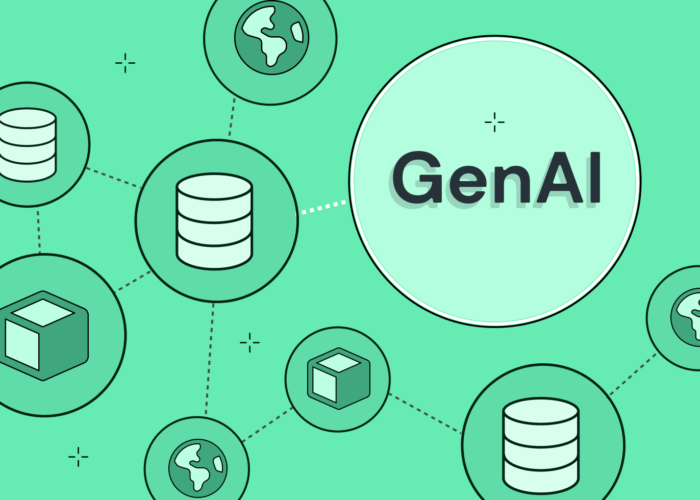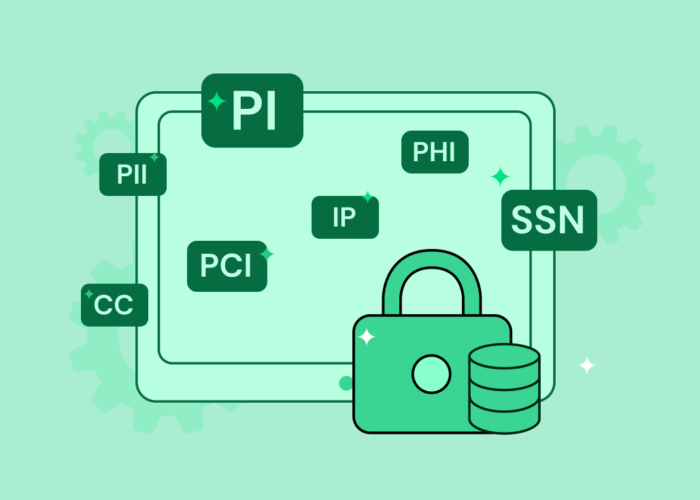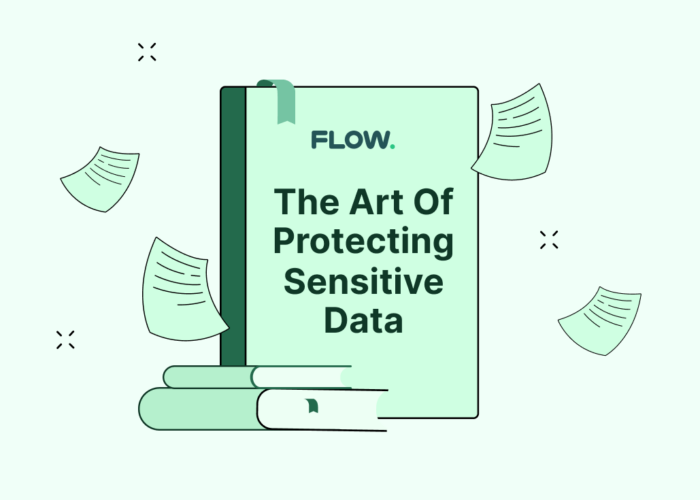Semi-Structured Data: Definition, Uses, and Security


In the era of big data, information comes in various shapes and forms, and not all of it adheres to traditional structured databases. One increasingly prevalent type of data that has gained prominence is semi-structured data. In this blog post, we will delve into the world of semi-structured data, exploring its definition, characteristics, and real-world examples to help you grasp its significance in the data landscape.
What is Semi-Structured Data?
Semi-structured data is a category of data that does not conform to the rigid structure of traditional relational databases but still exhibits some level of structure. Unlike structured data, which is neatly organized into rows and columns, semi-structured data offers more flexibility in terms of data modeling. It strikes a balance between the unstructured chaos of text documents and the strict schema of structured databases.
Characteristics of Semi-Structured Data
To better understand semi-structured data, it’s essential to recognize its key characteristics:
- Flexibility: Semi-structured data excels in its flexibility and adaptability. Unlike structured data, which adheres to a predefined schema with rigid tables and columns, semi-structured data accommodates variations in structure. This adaptability is invaluable in scenarios where data may evolve over time or when dealing with diverse data sources.
- Self-Descriptive: A hallmark of semi-structured data is its self-descriptive nature. It often includes metadata or tags within the data itself, providing essential context about the content and structure. These metadata elements, such as XML tags or JSON key-value pairs, offer valuable information for data interpretation.
- Hierarchical Structure: Semi-structured data frequently employs hierarchical structures to represent complex relationships. Formats like JSON and XML use nested structures, allowing data to be organized in a tree-like fashion.
- Schema Evolution: Unlike structured data, where making schema changes can be a cumbersome process, semi-structured data embraces schema evolution. As data requirements evolve over time, semi-structured data can easily accommodate changes without causing disruptions.
- Support for Unstructured Elements: Semi-structured data can incorporate elements of unstructured data, allowing for the inclusion of free-text fields or unformatted content.
Comparison with Structured and Unstructured Data
Compared to structured data, which is organized in a highly systematic and predictable manner, such as in database tables, semi-structured data is more flexible. This flexibility allows for the representation of complex data types and relationships that are not easily captured in traditional database schemas.
On the other hand, unstructured data, which includes formats like text documents, images, and videos, lacks any recognizable structure or order. Semi-structured data differs from unstructured data in that it does contain some identifiable elements that suggest an underlying structure, making it more amenable to processing and analysis.Common examples of semi-structured data include:
- XML (eXtensible Markup Language): A flexible text format that is widely used in the interchange of data on the internet. XML data consists of a series of elements, each enclosed by tags, which can be nested to represent complex hierarchical structures.
- JSON (JavaScript Object Notation): A lightweight data-interchange format that is easy for humans to read and write, and easy for machines to parse and generate. JSON is often used for transmitting data in web applications.
- CSV (Comma-Separated Values): A simple format used to store tabular data, such as spreadsheets or databases. Each line in a CSV file corresponds to a data record, with fields separated by commas.
By offering a middle ground, semi-structured data provides a versatile format that can adapt to various needs, making it a crucial component in the landscape of digital information management.
Importance and Applications of Semi-Structured Data
In the era of big data and advanced analytics, semi-structured data plays a pivotal role. Its flexibility and ease of use make it an ideal choice for many modern applications where structured data is too limiting, and unstructured data is too cumbersome to analyze efficiently. The inherent structure of semi-structured data, such as the use of tags in XML or key-value pairs in JSON, allows for easier parsing and analysis compared to completely unstructured data. This structure also enables semi-structured data to be more readily ingested by data analysis tools and systems, facilitating more efficient data processing and analytics.
Common Use Cases in Various Industries
Semi-structured data is utilized across a variety of industries for diverse applications:
- E-commerce: Online retailers use XML and JSON formats extensively to handle web-based data interchange, including product catalogs, customer reviews, and transaction data.
- Healthcare: Medical records often combine structured and unstructured data. Formats like HL7, a set of international standards for the transfer of clinical and administrative data, are semi-structured and widely used in healthcare information systems.
- Banking and Finance: Financial institutions use semi-structured data for transaction processing, risk analysis, and regulatory compliance reporting. Data formats like FIX (Financial Information eXchange) protocol are examples of semi-structured data in this sector.
- Social Media and Digital Marketing: Platforms store and process vast amounts of user data, much of which is semi-structured, such as JSON data from user interactions, likes, shares, and comments.
The Complexity of Securing Semi-Structured Data
Securing semi-structured data, especially when it is in motion, presents unique challenges. As this data moves across networks and between applications, it becomes susceptible to interception, unauthorized access, and manipulation. The very characteristics that make semi-structured data flexible and easy to use – such as its varied formats and the inclusion of metadata – also make it a complex target for security protocols.
Ensuring the integrity and confidentiality of data as it traverses various network layers demands robust encryption and dynamic security measures. Moreover, the volume and velocity of semi-structured data in environments like cloud computing and real-time analytics further complicate its security.
Semi-structured data has some unique vulnerabilities:
- Inconsistent Formats: The lack of a standard format can make it difficult to apply uniform security measures across different types of semi-structured data.
- Embedded Metadata: This data often contains metadata that can reveal sensitive information, making it a target for data breaches.
- Complex Parsing Requirements: The need for specialized parsers to read and write semi-structured data can introduce security vulnerabilities if these parsers are not designed with security in mind.
Overview of Traditional Security Measures and Their Limitations
Traditional security measures, while effective for structured data, often fall short when applied to semi-structured data:
- Data Encryption: While essential, encryption alone may not be sufficient. As semi-structured data often requires on-the-fly decryption for processing and analysis, it can become vulnerable during these operations.
- Access Controls: Standard access control mechanisms may not be granular enough to handle the nuances of semi-structured data, especially when dealing with data that has variable and complex structures.
- Data Masking and Tokenization: These techniques can protect sensitive data, but applying them uniformly across varied semi-structured formats can be challenging.
Addressing these challenges requires a more nuanced approach to data security, one that acknowledges the specific characteristics and usage patterns of semi-structured data. As businesses and organizations increasingly rely on this type of data for critical operations, the need for sophisticated and adaptable security strategies becomes more pressing. The next section will explore how innovations, particularly in the realm of Large Language Models (LLMs), are beginning to offer promising solutions to these complex security challenges.
Innovations in Semi-Structured Data Security
Introduction to Large Language Models (LLMs) in Data Security
The integration of Large Language Models (LLMs) in data security marks a significant advancement in protecting semi-structured data. These AI-driven models, known for their ability to process and understand human language, are now being leveraged to enhance data security. LLMs are particularly adept at analyzing, interpreting, and making decisions based on the content and context of semi-structured data, offering a more dynamic and intelligent approach to data protection.
How LLMs Enhance the Security of Semi-Structured Data
- Real-Time Analysis and Anomaly Detection: LLMs can continuously monitor data streams for unusual patterns or potential security threats. This is particularly useful for data in motion, where traditional security measures might not detect anomalies quickly enough.
- Contextual Understanding for Data Protection: These models understand the context and semantics of the data, allowing them to identify and protect sensitive information more effectively. This is crucial for semi-structured data, which can vary widely in format and content.
- Automated Compliance and Policy Enforcement: By understanding the content of the data, LLMs can help ensure that data handling complies with relevant regulations and organizational policies, automatically applying the necessary controls and protections.
The application of LLMs in data security represents a shift from traditional, rule-based security systems to more intelligent, adaptive solutions capable of understanding and responding to the complexities of semi-structured data. This evolution is crucial in an era where data breaches are becoming increasingly sophisticated and the amount of data being processed continues to grow exponentially.
Adaptable Security for Dynamic Data Formats
Addressing Varying Data Formats
The dynamic nature of semi-structured data’s format presents unique security challenges. As semi-structured data does not adhere to a strict schema like structured data, it can vary greatly in format and structure. This variability can be seen in data such as XML, JSON, and CSV files, where the organization of data elements can change, making consistent security application difficult. The challenge lies in securing data that could change format dynamically, requiring security solutions to be both flexible and intelligent in their approach.diverse datasets, excel in understanding context, tone, and intent. Their ability to mimic human-like text generation and comprehension is pivotal for data security aspects like data classification.
Context-Aware and Adaptable Solutions
In response to these challenges, there’s a growing need for context-aware and adaptable security solutions. These solutions must be capable of understanding the structure and context of semi-structured data in real-time and adapting their security measures accordingly. This requires a combination of advanced data analysis techniques and a deep understanding of the data’s context, ensuring that security protocols are applied accurately and effectively, irrespective of the data format.
LLM Examples in Semi-Structured Data Security
Large Language Models (LLMs) represent a significant advancement in this area. These models, powered by vast and diverse datasets, have the unique capability to mimic human-like text comprehension. This attribute is not only beneficial in generating human-like responses but also in understanding and interpreting semi-structured data.
LLMs offer unparalleled precision in data classification, especially for unstructured data formats.They can identify a wide array of data types, over 150 distinct types in some cases, with remarkable accuracy. This is a considerable improvement over traditional Named Entity Recognition (NER) algorithms, such as LSTM, which were limited in their range of recognizable data classes and struggled with contextual understanding. For more information, read here.
For semi-structured data security, LLMs can be employed for real-time data classification and analysis. They can intelligently discern the varying formats and structures within semi-structured data streams, identifying sensitive or critical data for appropriate security measures. For example, an LLM-based data classification system could automatically detect personal identification details in a JSON file and apply encryption or redaction as needed, even if the format of the JSON file changes from one document to another.
This adaptability and context-awareness of LLMs in handling semi-structured data security is a significant step forward. It allows for more granular and accurate security applications, tailoring protections to the specific needs of each data instance, thereby enhancing overall data security and compliance with regulatory requirements.
Final Thoughts
Our exploration of semi-structured data reveals its unique position in the digital landscape. Striking a balance between the rigidity of structured data and the flexibility of unstructured data, semi-structured data, exemplified by formats like XML, JSON, and CSV, is pivotal in modern data management and analytics. Its versatility makes it a valuable asset across various industries, offering advantages in adaptability and ease of use.
The security of semi-structured data, particularly in motion, presents distinct challenges. Its varying formats and dynamic nature expose it to unique vulnerabilities, which traditional security measures are often ill-equipped to handle. However, the emergence of Large Language Models (LLMs) in data security marks a significant advancement. These models enhance the protection of semi-structured data, both at rest and in transit, by offering adaptable, context-aware solutions that can intelligently manage the inherent variability of this data type.
Reflection on Semi-Structured Data’s Significance
In our digital era, the significance of semi-structured data cannot be overstated. It embodies the evolving nature of information – its form and flow – in a world increasingly reliant on data-driven decision-making. The ability of semi-structured data to accommodate and integrate diverse data formats is not just a technical convenience; it mirrors the complexity and interconnectedness of our digital ecosystems.
Future of Data Security
Looking ahead, the role of advanced technologies like LLMs in data security is set to become increasingly central. As data continues to be an invaluable asset, the need for robust, flexible, and intelligent security solutions becomes imperative. LLMs and similar technologies represent a promising future in this domain – one where data security is seamlessly integrated, contextually aware, and capable of evolving alongside the data it protects.
In conclusion, the journey of semi-structured data from a mere concept to a cornerstone of modern data practices underscores a broader narrative. It’s a narrative about adaptability, the significance of security in an interconnected world, and the potential of technology to not only address current challenges but also to pave the way for future innovations. As we continue to harness the power of semi-structured data, our focus must remain on developing and implementing security solutions that are as dynamic and versatile as the data they protect.


